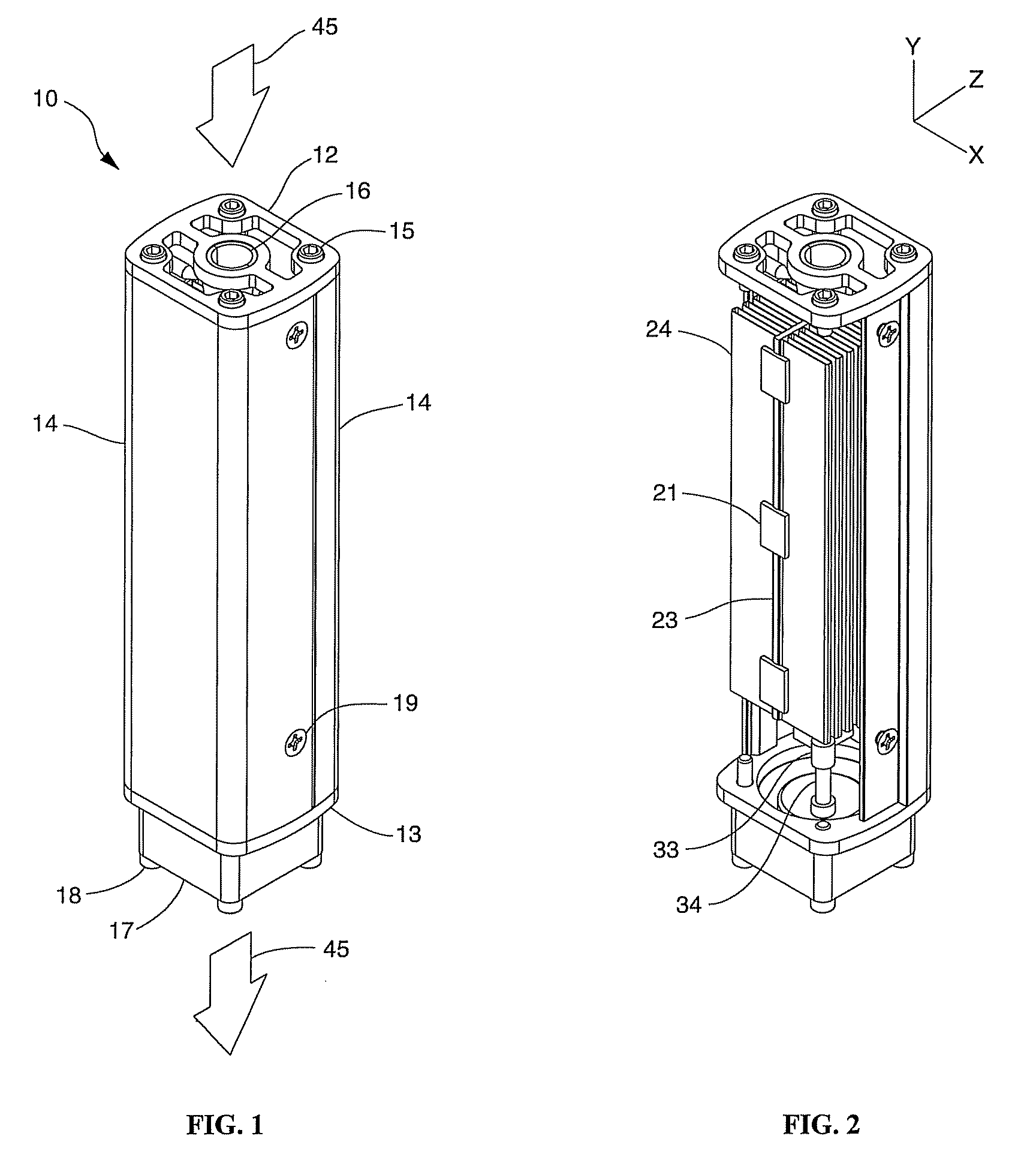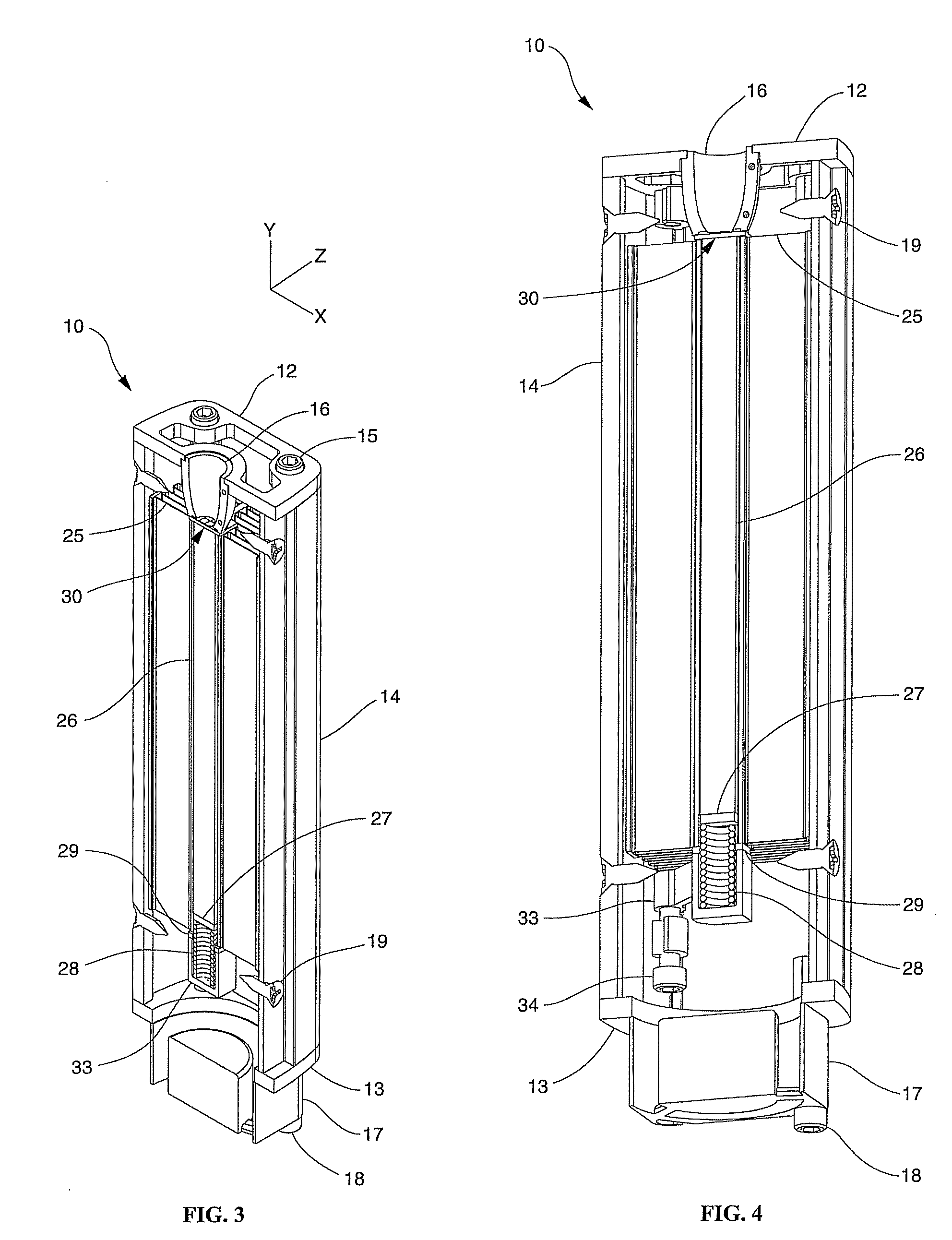Solid state lighting apparatus utilizing axial thermal dissipation
a lighting apparatus and axial thermal dissipation technology, applied in lighting and heating apparatus, semiconductor devices for light sources, lighting support devices, etc., can solve problems such as short operating lifetimes, erratic performance, and hindered devices, and achieve the effect of improving the thermal dissipation of waste hea
- Summary
- Abstract
- Description
- Claims
- Application Information
AI Technical Summary
Benefits of technology
Problems solved by technology
Method used
Image
Examples
Embodiment Construction
[0034]The present invention is generally directed to high intensity solid state lighting devices. In particular, the invention relates to the use of a primarily axial thermal dissipation system in order to provide for a lighting apparatus with a predominately axial device form factor, or alternatively, a low profile device form factor.
[0035]With reference now to the attached drawings, FIGS. 1-4&FIG. 7 illustrate a high intensity solid state lighting apparatus 10 in accordance with one embodiment of the invention. The lighting apparatus is generally comprised of two functional component groups, the internal component group 50 (shown in FIG. 8) and the external component group 60 (shown in FIG. 9).
[0036]These component groups contribute to the functioning of the lighting apparatus in the following ways: the internal component group 50 serves to generate light and to dissipate the resulting waste heat into an internal structure; the external component group 60 serves to transfer the wa...
PUM
 Login to View More
Login to View More Abstract
Description
Claims
Application Information
 Login to View More
Login to View More - R&D
- Intellectual Property
- Life Sciences
- Materials
- Tech Scout
- Unparalleled Data Quality
- Higher Quality Content
- 60% Fewer Hallucinations
Browse by: Latest US Patents, China's latest patents, Technical Efficacy Thesaurus, Application Domain, Technology Topic, Popular Technical Reports.
© 2025 PatSnap. All rights reserved.Legal|Privacy policy|Modern Slavery Act Transparency Statement|Sitemap|About US| Contact US: help@patsnap.com



